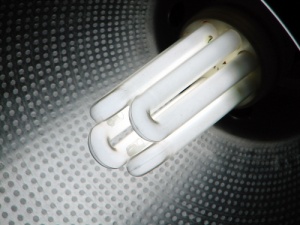NXP GreenChip connects light bulbs to the internet

Semiconductor manufacturer NXP has launched a range of internet-enabled light-bulb controller chips that can be linked to any device with a web connection.

NXP has launched a range of internet-enabled light-bulb controller chips that can be linked to any device with a web connection.
The new 'smart lighting' chips — a part of NXP's low-power GreenChip range — are each assigned their own unique IP address, allowing users to dim or switch lights on and off individually from a smartphone, tablet, PC or internet-enabled TV.
"For individual consumers, Smart Lighting means highly personalised, intelligent lighting environments — lights that turn on and off when and where you need them, at the desired level of brightness — while saving power and electricity costs," said John Croteau, senior vice president and general manager of power lighting solutions and high performance RF for NXP Semiconductors, in a statement on Monday.
The GreenChip smart lighting system contains electronics small enough to fit inside a standard light bulb and can operate on the same wireless sensor networks consumers may be using at home for energy metering, smart appliances and security systems, the company said.
The bulbs are controlled by NXP's JenNet-IP network layer software, which the company described as "a 6LoWPAN mesh-under tree network, specifically targeting low-power IEEE 802.15.4-based networking for residential and industrial applications".
Mesh network
Essentially, the bulbs communicate with each other over the mesh network (PDF), which routes IPv6 packets by relaying them from device to device rather than passing the routing requirements up through the network as is more common.
The GreenChip smart lighting products come in two forms: GreenChip iCFL for compact fluorescents and GreenChip iSSL for LED lighting. Both products include the iCFL or iSSL chipset, an ultra-low power standby controller that takes less than 10mW (milliwatt) when not in use, a 2.4-GHz IEEE 802.15.4 standard-compatible wireless microcontroller, and wireless connectivity via the JenNet-IP software.
As well as switching and dimming the lights, the smart lighting can be connected to other sensors to add extra functionality, such as automatically matching the lighting to outdoor conditions or automatically switching lights off when no one is in a room.
Smart lighting can form a part of the smart grid, a network of internet-connected devices that can be controlled and monitored remotely. Some countries have already begun installing smart meters in homes and other premises to allow consumers to better understand and monitor their own consumption of electricity and gas.
In some cases, coarse load control, such as switching off air conditioning units, is already in place. The ultimate aim of the smart grid is to reduce the amount of energy consumed, in line with the European Union's 20-20-20 goal to reduce consumption.
However, a report from the US Government Accountability Office warned that certain smart meters had been made without sufficiently strong security architecture and without logging and forensic capabilities.
Get the latest technology news and analysis, blogs and reviews delivered directly to your inbox with ZDNet UK's newsletters.